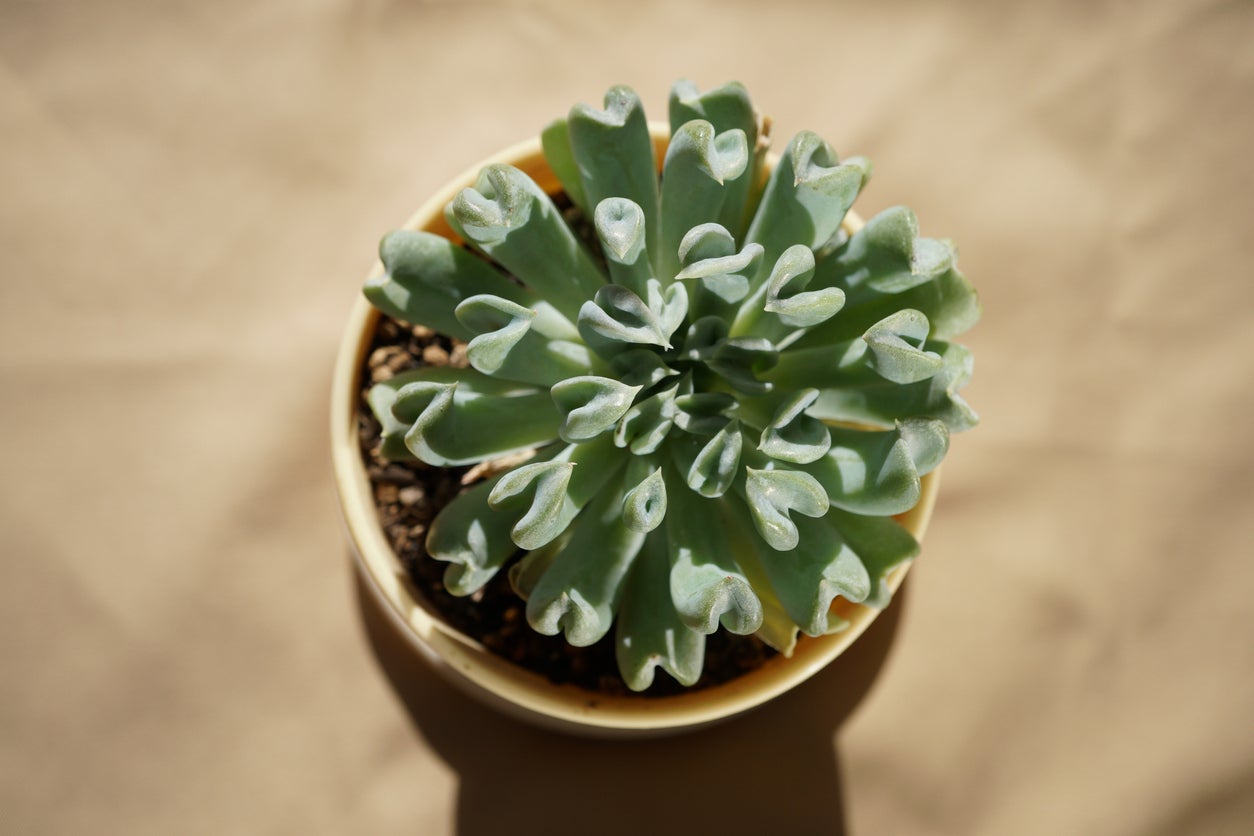Topsy Turvy Echeveria Care: How To Grow A Topsy Turvy Plant


Succulents are varied and come in a lot of different shapes and colors. What they all have in common are the fleshy leaves and the need for a dry, warm environment. A Topsy Turvy plant is a stunning type of echeveria, one large group of succulents, that is easy to grow and adds visual interest to desert beds and indoor containers.
About Topsy Turvy Succulents
The Topsy Turvy plant is a cultivar of Echeveria runyonii that has won awards and is simple to grow, even for beginner gardeners. Topsy Turvy forms rosettes of leaves that grow up to between 8 and 12 inches (20.5 and 30.5 cm.) in height and width. The leaves are a silvery green color, and they grow with a lengthwise fold that brings the edges downward. In the other direction, the leaves curl upward and toward the center of the rosette. In summer or fall, the plant will bloom, producing delicate orange and yellow flowers on a tall inflorescence. Like other types of echeveria, Topsy Turvy is a great choice for rock gardens, borders, and containers. It grows outdoors only in very warm climates, generally zones 9 through 11. In colder climates, you can grow this plant in a container and either keep it indoors or move it outside in warmer months.
Topsy Turvy Echeveria Care
Growing a Topsy Turvy Echeveria is pretty straightforward and easy. With the right start and conditions, it will need very little attention or maintenance. Partial to full sun, and soil that is coarse or sandy and that drains very well are essential. Once you have your Topsy Turvy in the ground or a container, water it whenever the soil dries out completely, which won’t be that often. This is only necessary during the growing season. In the winter, you can water it even less. The bottom leaves will die and brown as Topsy Turvy grows, so just pull these off to keep the plant healthy and attractive. There are not many diseases that attack echeveria, so the most important thing to watch out for is moisture. This is a desert plant that needs to stay mostly dry with only occasional watering.
Sign up for the Gardening Know How newsletter today and receive a free copy of our e-book "How to Grow Delicious Tomatoes".

Mary Ellen Ellis has been gardening for over 20 years. With degrees in Chemistry and Biology, Mary Ellen's specialties are flowers, native plants, and herbs.